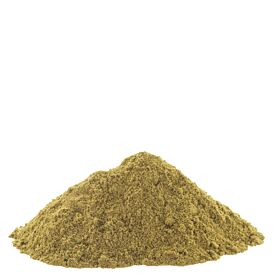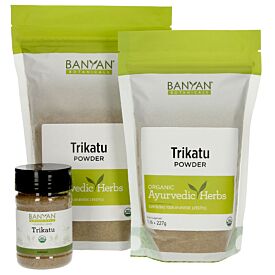Agni: The Key to Optimizing Health
Most of us value agni as more than the digestive fire in our stomach. We appreciate that it governs digestion, absorption, and assimilation not only of food but also of thought and external stimuli. The ultimate end products are the subtlest forms of vata, pitta, and kapha—prana (the life breath), tejas (brilliance and consciousness), and ojas (the essence of life and immunity), respectively.
The purpose of this article is to further deepen our appreciation of agni and to explore how we can incorporate it into our practice in a way that is truly unique to Ayurveda. For those who need a brief foundation or refresher on the basics of agni, please take a look at our guide The Importance of Healthy Digestion.
A Deeper Look at Agni
While agni exists in literally every cell of our body, and therefore has an infinite number of types and specialized functions, let us note seven that are especially clinically relevant.
- Jathara agni. The core fire seated in the stomach and small intestine, jathara agni governs the initial process of digestion and nutrient breakdown in the gastrointestinal tract; it is the source of all other agni.
- Kloma agni. Contained in the pancreas and choroid plexus, kloma agni is primarily responsible for the digestion of sweet taste and water balance; it can be equated with pancreatic enzymes.
- Bhuta agni. Housed in the liver, bhuta agni has five subtypes, each corresponding to one of the five elements (ether, air, fire, water, and earth) and the digestion of that corresponding element; it can be equated with liver enzymes.
- Jatru agni. As the transformative power of the thyroid and thymus, jatru agni plays a primary role in both cellular metabolism and immunity.
- Dhatu agni. As the digestive energy of each dhatu (tissue layer), each of the seven dhatu agni maintains tissue nourishment and metabolism and converts immature into mature tissue—rasa (plasma), rakta (blood), mamsa (muscle), meda (fat), asthi (bone), majja (nervous system), and shukra or arthava (reproductive tissue).
- Pilu agni. Within the cellular membrane, pilu agni serves as the guardian of the cell and provider of cellular nutrition.
- Pithara agni. Within the nuclear membrane of the cell, pithara agni is the genetic agni that converts cellular nutrition into consciousness, affecting the DNA.
With this breakdown, the way in which allopathic concepts correspond to the concept of agni becomes intuitive. Diabetes mellitus is a kloma agni issue. Osteoporosis can be either poor asthi dhatu agni, leading to poor transformation of calcium and minerals, or even excessive asthi dhatu agni, producing a burning out of the tissue. Whether it is poor or excessive dhatu agni depends on the individual and the overall state of agni—sama (balanced), vishama (irregular), tikshna (sharp), or manda (slow). The Four Varieties of Agni article provides a greater understanding of these agni variations.
The beauty of Ayurveda is that it has discovered agni as a necessary component of the mind and spirit through prana, tejas, and ojas. Without agni, the transformation of stimuli into thought and thought into action cannot occur. This insight can be incredibly life altering for some clients.
Using Agni to Understand Your Client
This section serves to illustrate one way to approach a client by thoroughly analyzing agni. By the end, you will grasp how taking agni into consideration is crucial and can complete your understanding of a client and his or her challenges.
- What is the state of jathara agni? Always begin with the seed of all other agni. Is jathara sama, vishama, tikshna, or manda (see Four Varieties of Agni)? This agni sets the tone of all other agni; if jathara agni is weak, then most likely other agni will also suffer.
- Which specific type of agni is dysfunctional? Explore and analyze the client’s challenges from the viewpoint of the various types of agni. For an example, thyroid depletion indicates manda jatru agni. This may call for using bhramari pranayama, which kindles agni through vibration.
- Is the client having difficulty with weight? Manda agni at multiple levels (e.g., jathara, bhuta, and meda dhatu agni) is likely the hidden culprit in the client who is doing everything right but just cannot lose weight. Likewise, an excessively tikshna agni creates barriers to gaining weight.
- What is the state of the client’s emotional and mental well-being? Recognize ama and poor pilu and pithara agni in the pathology of mood and mental challenges. Ama acts like a veil over a client’s perception of the world. As a result, discrimination, memory, and clarity (tejas) suffer. Manda agni will lead to elevated ama, and strengthening agni is the way to clear ama.
- How is the client’s immunity and vitality? Ojas is the very end product of all digestion. Without healthy agni throughout the body, ojas will eventually suffer, resulting in a weakened immune system and overall feeble vitality.
- Is the client on many supplements and medications? Medications, in particular, can be very taxing on a client’s agni. In this case, the best thing—and perhaps the only thing—you can offer him or her is to strengthen agni.
- How do you approach developing a regimen for this client—be it dietary, herbal, yogic, or otherwise? Make sure his or her agni (physical and mental) can digest all aspects of the protocol. If you find that agni is weak, then start simple and couple your recommendations with agni-strengtheners. This is particularly important when considering hard-to-digest herbs.
It is said that agni is the root of all disease, yet far too often it is underappreciated and overlooked when consulting with a client. We hope this proves to be a good starting point in your further exploration of agni. Keep an eye out for the next article in this two-part series, which will cover chikitsa (therapy) and herbal recommendations for balancing agni!
(The second part of this series is provided in the article, Improving Your Client's Agni Through Ayurveda.)










